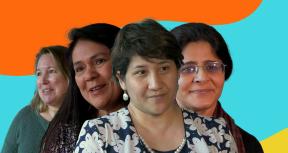The private sector plays a pivotal role in generating jobs, incomes, and economic growth to lift people out of poverty. Yet, attracting private investment is extremely challenging in poor countries, especially in those affected by conflict and fragility. Weak business environments, infrastructure constraints, limited access to financing, and high political risks often deter domestic and foreign investors.
Blended finance offers a powerful solution. By mixing public development funds with private capital, blended finance can catalyze private sector investment that might not otherwise happen. One example is the Private Sector Window (PSW) launched in 2017 by the International Development Association (IDA), the World Bank’s fund for the poorest countries. The PSW enables International Finance Corporation (IFC) and Multilateral Investment Guarantee Agency (MIGA) private sector investments and guarantees in challenging environments by partially mitigating risks and potential losses. This risk mitigation makes otherwise unviable investments bankable.
Our team at the Independent Evaluation Group looked at trends in PSW usage, market development potential and enabling factors of the PSW. This is the second time the Independent Evaluation Group has assessed the PSW. Our first assessment, which we completed in July 2021, found that the PSW was an innovative instrument that had yet to prove that it was fit for purpose. The limited deployment of the 18th Replenishment of IDA (IDA18) funds allocated to the PSW led us to suggest accelerating usage of the funds. At the same time, we cautioned against the risks of market distortions that the PSW concessionality might trigger.
Our most recent evaluation, which we completed in October 2023, unveiled a very different picture showing a promising trajectory. Our findings indicate that the PSW has passed the proof-of-concept stage; it can be scaled; and we recommend that IDA, IFC, and MIGA take measures to make this happen.
The PSW has helped IFC and MIGA enter new countries and sectors.
After a slow start during IDA18, with only 53% of the IDA18 allocation utilized, the usage of PSW funds has significantly increased, with 97% of the IDA19 funds used and an expected full utilization of the IDA20 allocation. In 2023, IFC has PSW projects approved in 39 countries, up from 8 countries in 2018, while MIGA has PSW projects in 22 countries, up from 3 countries in 2018. A growing number of PSW projects have been in sectors in which IFC and MIGA had not invested previously, such as IFC equity investments in Ethiopian small and medium enterprises and MIGA solar power investment guarantees in Malawi and Burkina Faso. We also find that the PSW has mitigated the effects of recent crises and has allowed IFC to commit more in PSW-eligible countries than it would have otherwise.
PSW projects follow the minimum concessionality principle and do not distort markets.
Based on a review of pricing and project documents, in-depth analysis of country case studies, and interviews with clients and Bank Group staff, we found that IFC, MIGA, and IDA follow a rigorous process to approve the concessionality for each project. IFC and MIGA use their pricing models to calculate, document, and disclose prices, consistently comparing them with market prices in project approval documents. For IFC projects, the comparisons are reviewed and approved by IFC investment teams, the IFC credit department, and the Blended Finance Department. The MIGA underwriting teams review the comparisons for MIGA projects, and IDA reviews them for all (IFC and MIGA) projects. Where market prices do not exist, IFC and MIGA set their prices based on their risk-based pricing models. In these cases, there is, in effect, no market to distort, and the price that the market will bear is what is needed to catalyze the market.
There is room to better leverage the IDA PSW allocation and to improve the financial reporting on the PSW.
The PSW is not sufficiently leveraged, and financial reporting on the PSW is limited. IDA sets aside 100% of the capital for PSW obligations—a $1.2 billion nominal outstanding amount for 2023. IDA thus assumes that all these obligations will result in full losses. This assumption is unlikely to materialize given that total payouts under PSW guarantees have been only $1 million after six years of operations. We also found that IDA, IFC, and MIGA do not have a view of the profitability of the PSW at the agency level by facility or by instrument because financial reporting on the PSW is limited and fragmented across several units.
We offer two recommendations to improve the leverage of the PSW and advance IFC’s and MIGA’s contributions to creating the conditions for market development.
First, IDA, IFC, and MIGA would benefit from enhanced modeling of the risks taken by the PSW. Analyzing the use of pooled first-loss guarantees and assessing the impact of reducing first-loss coverage may, for example, suggest ways to better deploy IDA capital without increasing IDA losses.
Second, IDA, IFC, and MIGA should assess and report the financial results of the IDA PSW to World Bank management and the Board of Executive Directors by developing annual reports that show the profitability of PSW activities at the agency, facility, and instrument levels. This would allow management and the Board to understand the profits and losses from PSW activities and to inform the project modeling.
Overall, unlike in our 2021 early-stage assessment, we see a full use of PSW funds by IFC and MIGA, including to enter new sectors and countries in some of the most challenging environments. The PSW is viable. But to fully utilize its potential, IDA, IFC, and MIGA need to leverage its allocated finances and improve its financial reporting.










Add new comment